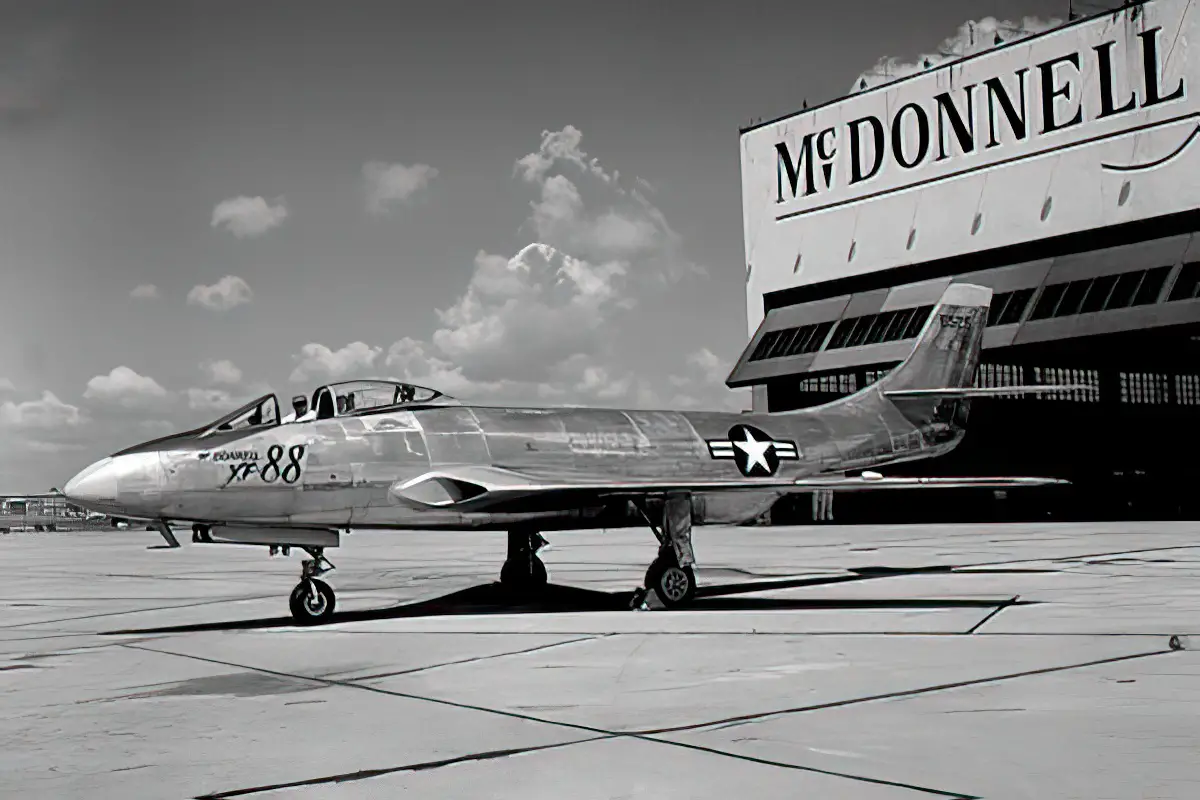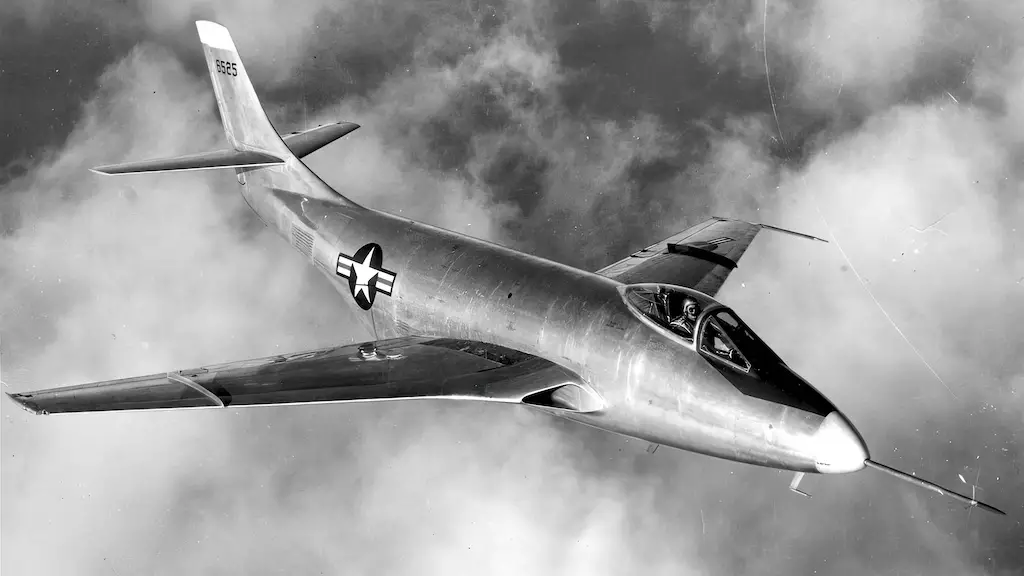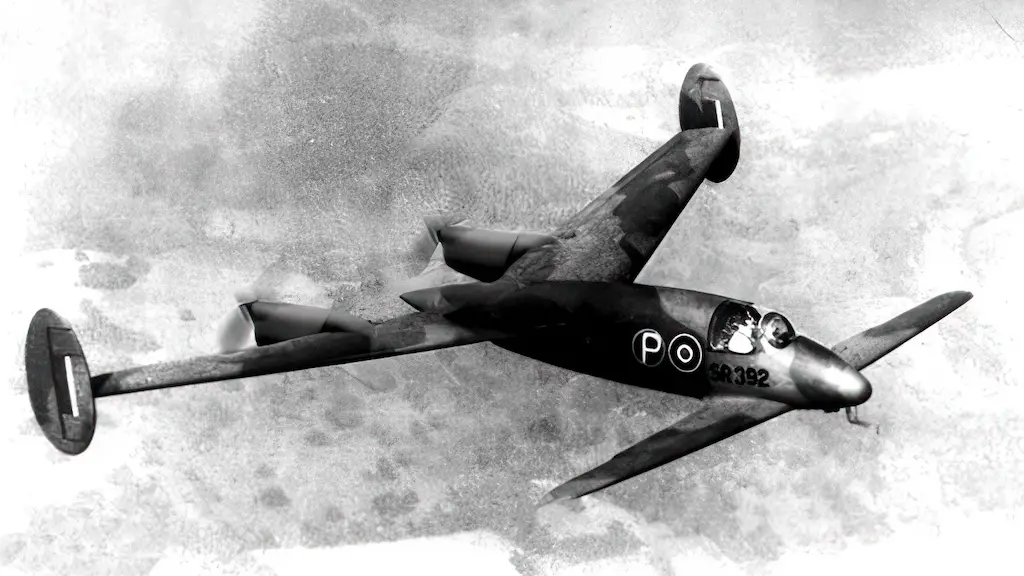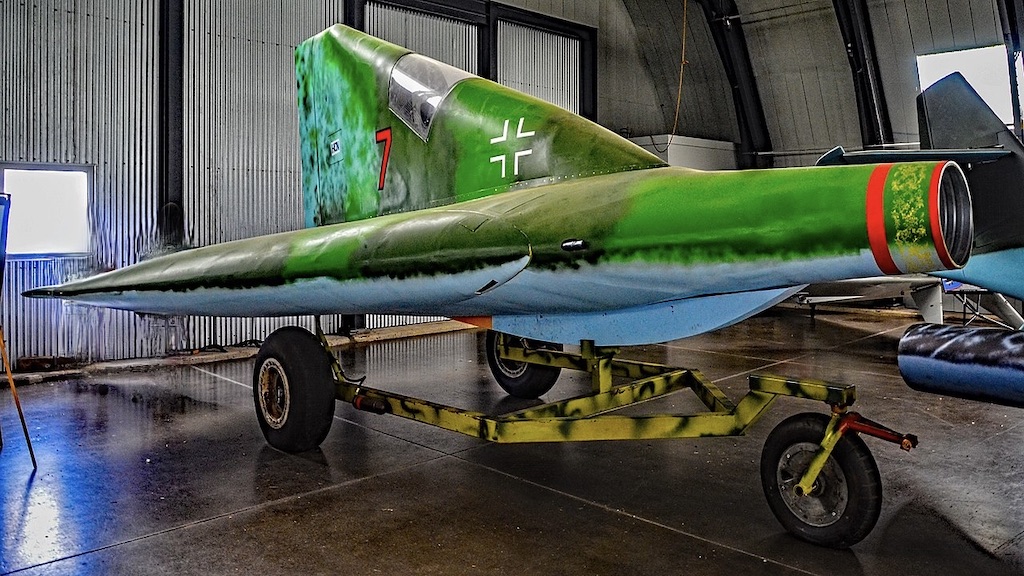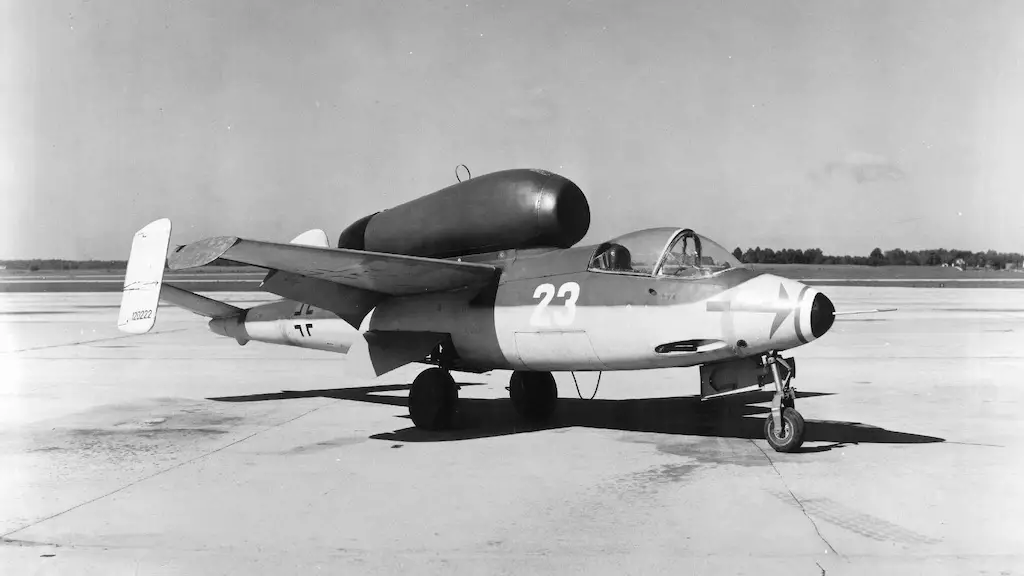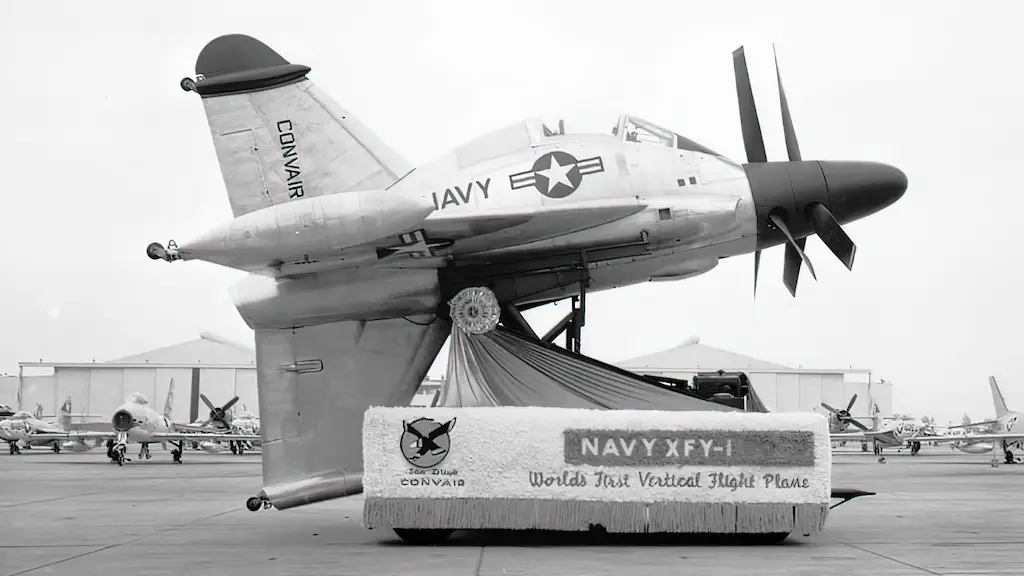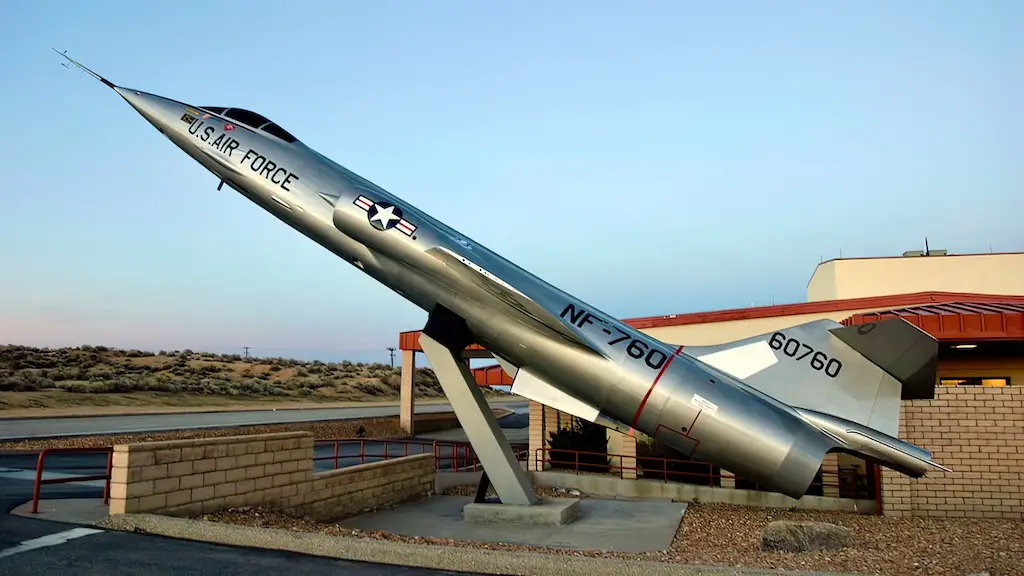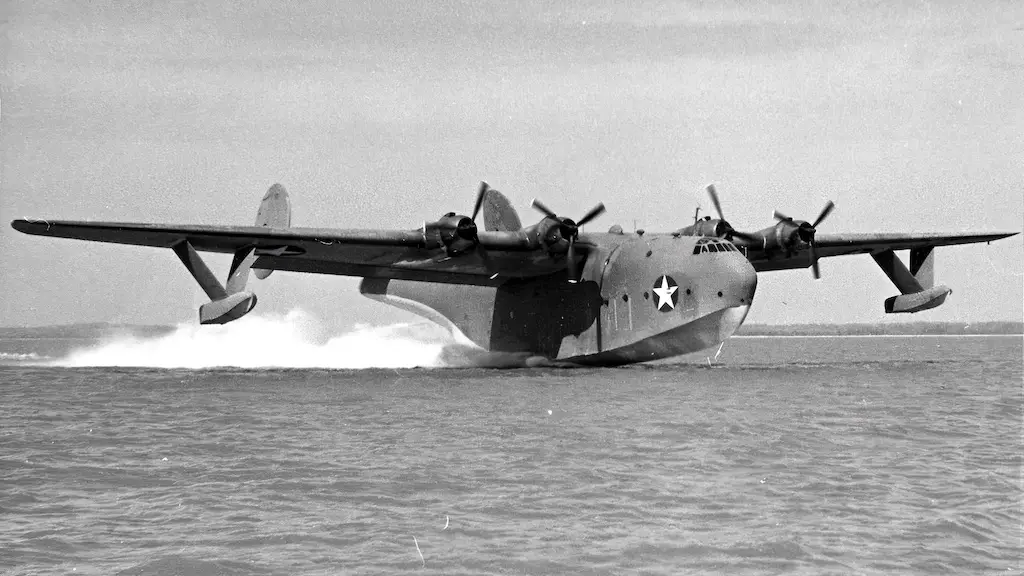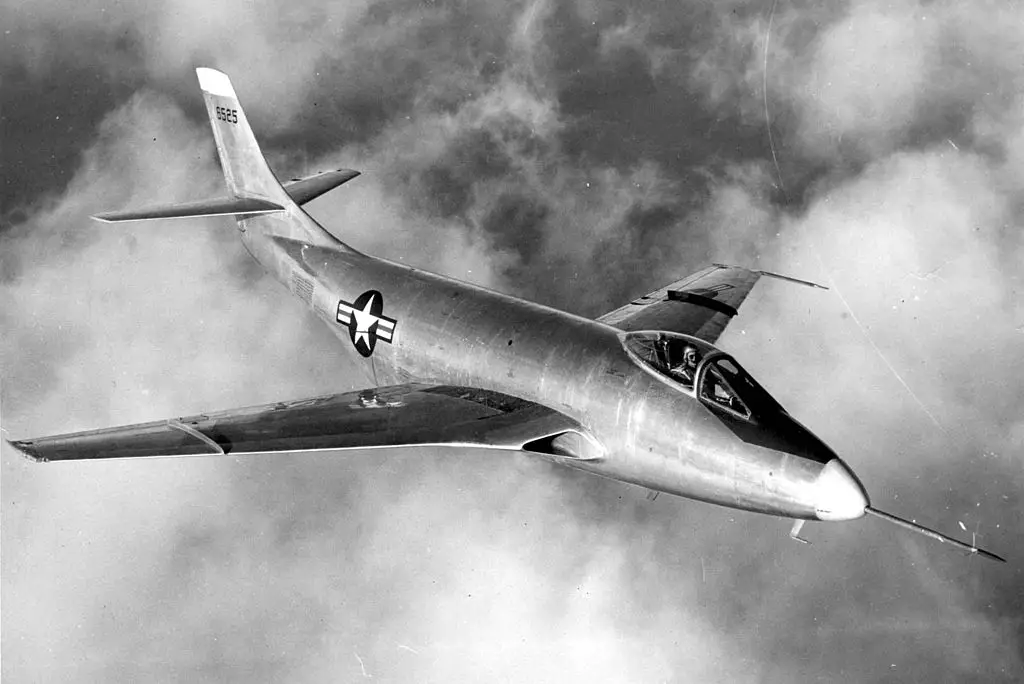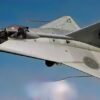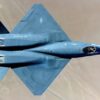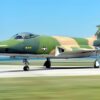The XF-88 was remarkable in a lot of ways. It possessed an advanced radar system that was cutting-edge for its day. The aircraft’s electronics turned it into a potent air-to-air combat platform that could monitor and pinpoint invading aircraft from a vast distance. The brand-new fighter was intended to be a high-performance, streamlined aircraft. Its two Westinghouse J34 turbojet engines allowed it to travel more than 1,500 miles and reach a top speed of about 600 mph.
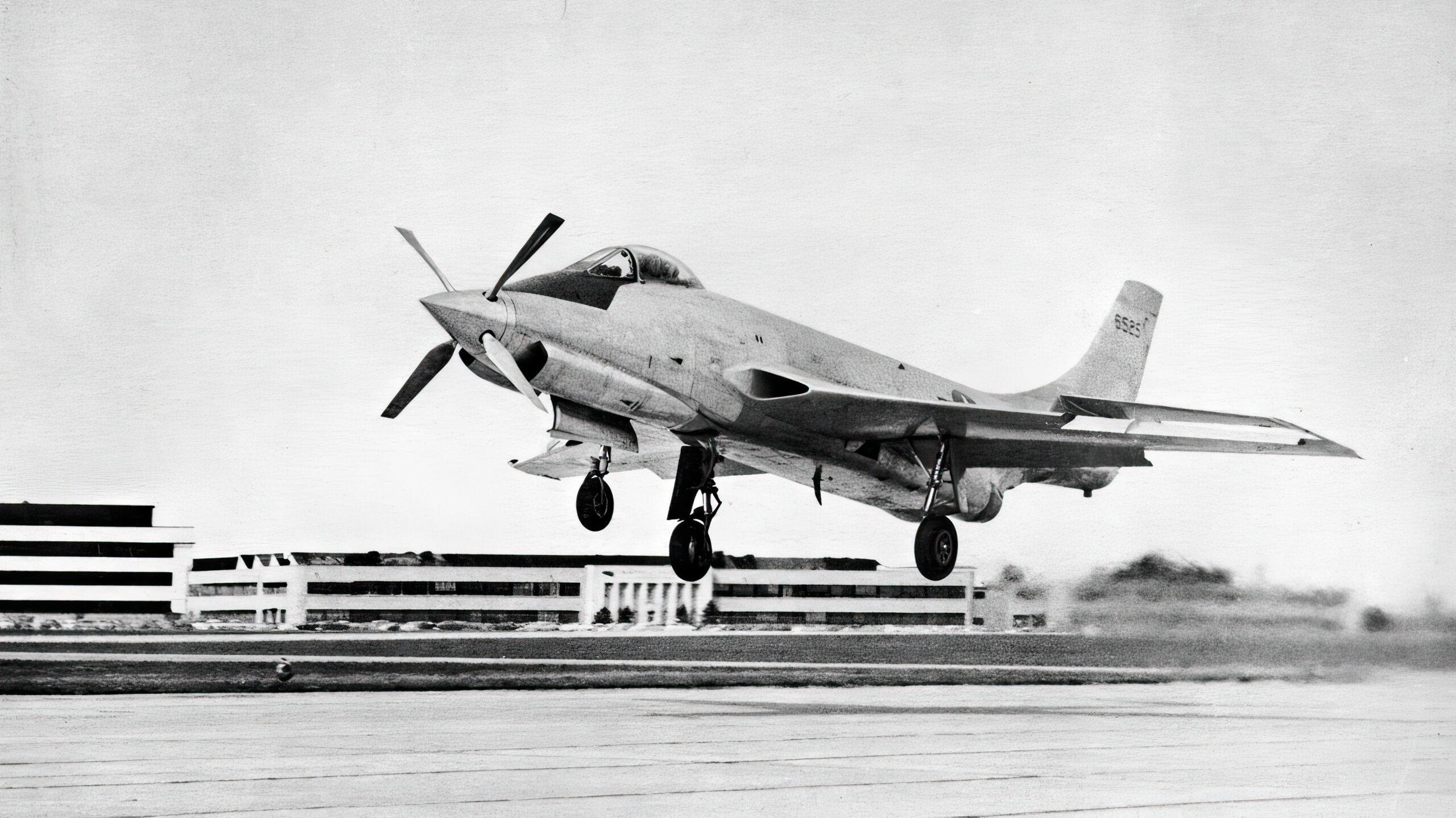
Development
McDonnell XF-88 The McDonnell Aircraft Corporation created the Voodoo jet fighter prototype in the late 1940s and early 1950s. A long-range escort fighter was needed by the US Air Force. Hence the XF-88’s development was started. During long-range bombing operations, the aircraft was built to provide air protection for strategic bombers, shielding them from hostile fighters.
Two Westinghouse J34 turbojet engines propelled the XF-88, which had a streamlined and aerodynamic shape. It also had an advanced radar system, making it a potent air-to-air fighting aircraft. The XF-88 also had retractable tricycle landing gear and an all-flying tail, both considered state-of-the-art design elements at the time.
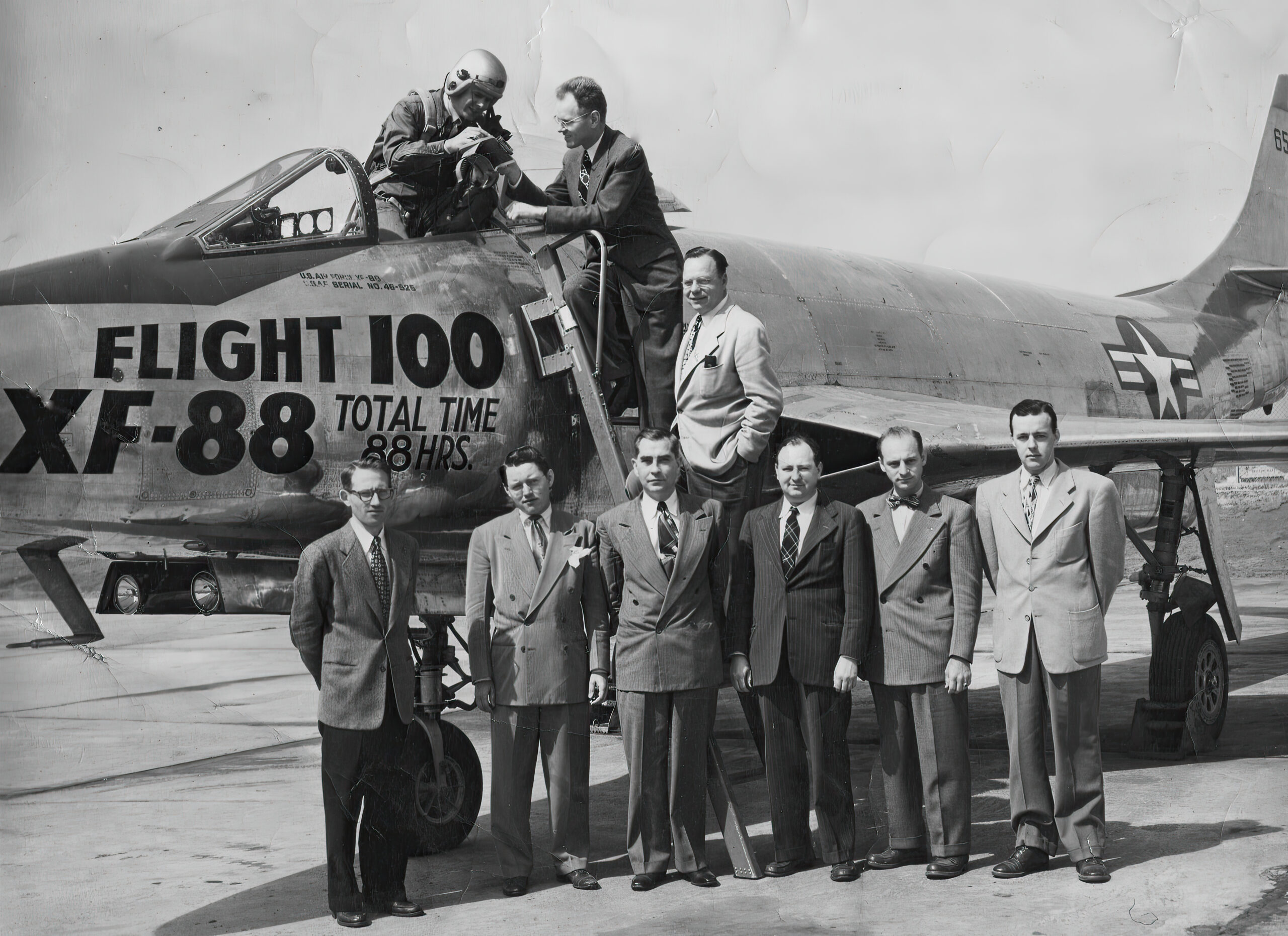
Shortcomings
The McDonnell XF-88 Voodoo was canceled as a result of several flaws. The Westinghouse J34 turbojet engines in the XF-88 were one of the aircraft’s principal sources of failure. Numerous technical flaws, including reliability issues, affected the engines’ overall performance and raised questions about whether they were suitable for use in airplanes.
Although the XF-88 was intended to be a long-range escort fighter, its size, and weight made air-to-air combat impossible for it to perform. The aircraft’s sophisticated radar system and other avionics gear also increased its total weight, making it less maneuverable than other aircraft.
Change of plans
Budgetary restrictions made the XF-88’s development program difficult. The aircraft was costly to design and manufacture. Concerns regarding the aircraft’s cost-effectiveness and long-term viability arose as a result of this and its technical issues. The US Air Force’s priorities shifted while the XF-88 was being built. The Air Force shifted away from long-range escort fighters like the XF-88 in favor of air-to-ground attack capability.
The XF-88 program was ultimately canceled as a result of these flaws and other considerations. Although the aircraft was deemed revolutionary for its day and had a number of advanced features, its technical issues and high cost proved to be insurmountable barriers to its ongoing development and eventual deployment.
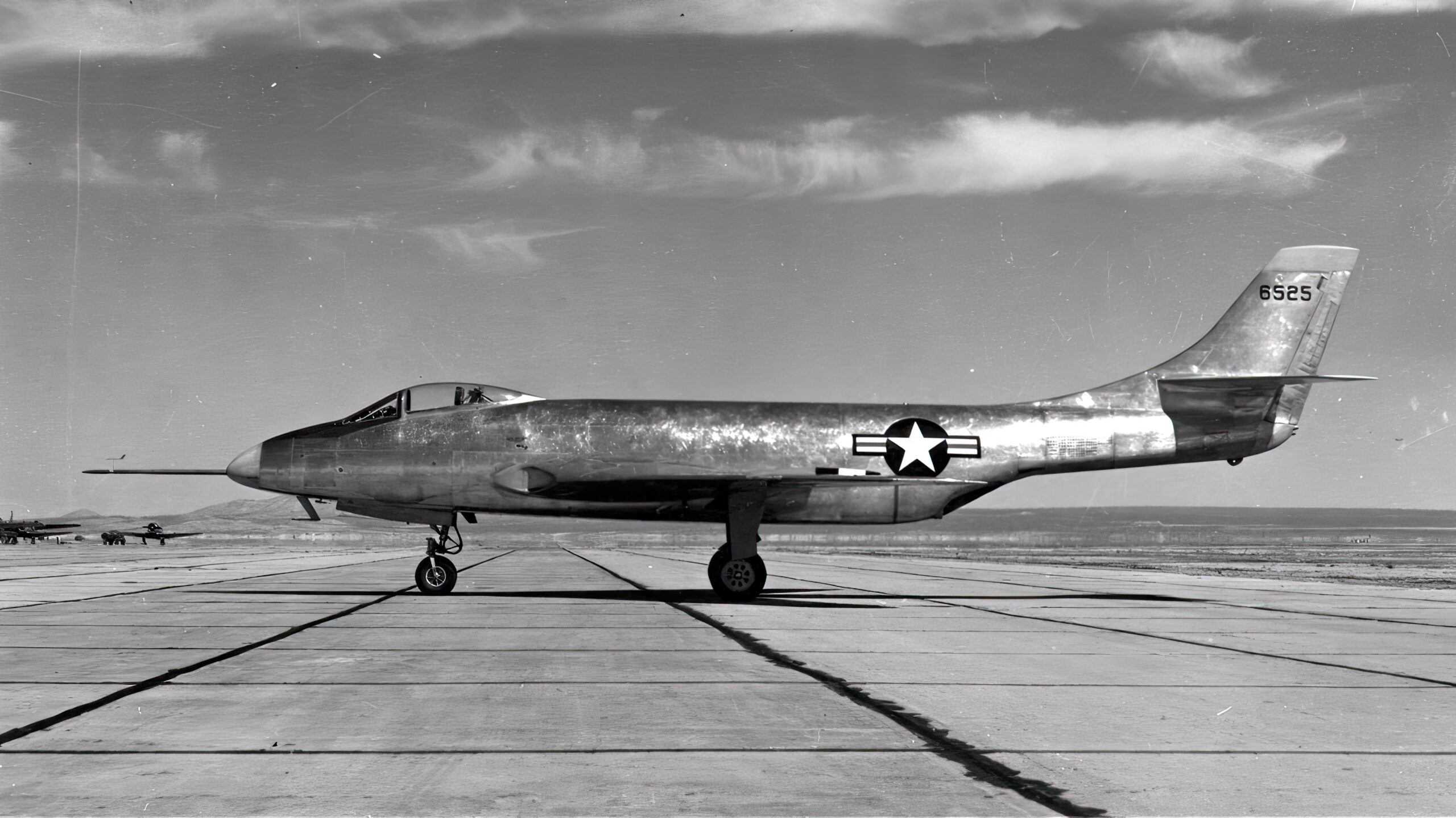
The test pilots loved it.
The XF-88 was largely well-liked by pilots in spite of these issues. The long-range escort fighter was praised for being swift, stable, and well-suited for the job. But in the early 1950s, the XF-88 program was abandoned as a result of its technical issues and shifting priorities within the US Air Force.
Even though the XF-88 was never used in combat, its test flights were a crucial advancement in jet fighter technology, and the aircraft is still a major part of aviation history.
